
The different types of Gurus as per our Scriptures
1. Types based on the method of carrying out the mission
Ayurvedic doctors are of three types – high, moderate and low level. A doctor who merely advises the patient to take medicines after checking the pulse and does not bother if the patient takes the medicines or not, is of a low level. The one who convinces his patient nicely that ‘he will recover if he takes the medicine’, is of a moderate level.
However the one, who on seeing that his patient is not taking the treatment despite the best of efforts, places his knee on the patient’s chest and forces him to take the medicine is of a high level.
In the same way, Gurus and teachers who preach and thereafter do not bother to find out if the disciples are following the precepts, are of a low level.
The Guru, who repeatedly tries to convince the disciples and showers His love on them so that they realise His preaching and desires for their emancipation, is of a moderate level. An ideal Guru is the one, who if the need arises, even forces the disciple to act in a particular manner, if he is inattentive or misbehaving. However an ordinary person does not realise this since the force used here is not physical but in the subtle dimension.
2. Internal and external Gurus
There is not much difference between an internal and an external Guru. In reality, ritualistically worshipping the external Guru amounts to worshipping the Guru established in the heart. One offers the heart to God.
The internal Guru possesses the radiance of a thousand suns. The only difference is that unlike the heat of the sun, the radiance of the internal Guru is soothing.
Every person attaining a high level of meditation gets a vision of the internal Guru. The Guru exists in the form of a continuously twinkling blue dot amidst the Divine radiance of the Sahasradal. Once the person realises the truth from the Omniscient Guru within himself, he will experience that the external Guru who he has been worshipping is no different than the internal one.
3. According to the Pishchila Tantra
A. The diksha Guru
The one who grants initiation with a mantra acquired by lineage.
B. The shiksha Guru
The one who teaches various rituals and yogic paths of spiritual practice such as the samadhi, dhyan, dharana, chanting, verses in praise of God, purashcharans and mahapurashcharans.
4. According to the Kulagam
A. Prerak (Inspirer)
One who inspires the seeker’s mind with an initiation.
B. Suchak (Informer)
One who suggests the types of spiritual practice and initiation.
C. Vachak (Speaker)
One who describes spiritual practices.
D. Darshak (Guide)
One who shows the advantages and disadvantages of spiritual practice and initiation.
E. Bodhak (Instructor)
One who explains spiritual practice and initiation theoretically.
F. Shikshak (Teacher)
One who teaches spiritual practice and imparts initiation.
The determination of the intellect to undertake spiritual practice is the most important aspect in the context of a seeker’s spiritual practice. Since the intellect takes a decision only after theoretical discussion, the instructor Guru is the greatest among all the Gurus.
5. Other types
A. Guru as a guide
He is the guiding force in the disciple’s life.
B. The questioner Guru
He leads the disciple to the real path by asking questions, giving hints or suggesting the right answers.
C. The Guru who gets rid of defects
The disciple lovingly and unhesitatingly narrates his own defects to the Guru.
D. The Guru of qualities
Deity Datta chose twenty-four Gurus, each possessing a quality complementing spiritual practice. They are known as the Gurus of qualities.
6. God’s Name itself is the Guru
Other Gurus try to generate faith in themselves among their devotees, while H.H. Baba (H.H. Bhaktaraj Maharaj) always says, “Have faith in God’s Name. The Name itself is your real Guru. It will show you the right path”.
7. The era and the Guru
In the Satyayug since the spiritual level of an average individual was above 60%, everyone received guidance from within. In the later eras, however, since the spiritual level went on declining, the need for a Guru in the manifest form went on increasing.
8. The Guru’s nirgun (Non-materialised)
form is superior to His sagun (Materialised) form
While at Indore on 8th October 1995, I (Dr. Jayant Balaji Athavale) said to H.H. Baba, “Despite Your illness, instead of feeling that I should stay beside and serve You, I feel like writing books. I cannot serve Your sagun form wholeheartedly”. Upon this H.H. Baba replied, “Your wanting to write books is correct. That is God’s mission. According to your destiny, you will have to complete it. Anyone else can serve this physical body”.

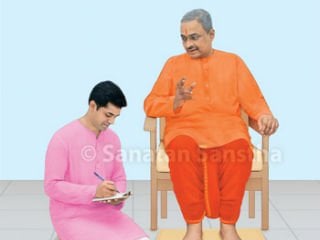 The one and only Guru-disciple tradition of the Sanatan Sanstha which has proven special in...
The one and only Guru-disciple tradition of the Sanatan Sanstha which has proven special in... Who is proclaimed a Saint as per Science of Spirituality ?
Who is proclaimed a Saint as per Science of Spirituality ?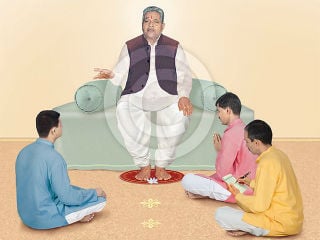 Faith & Guru
Faith & Guru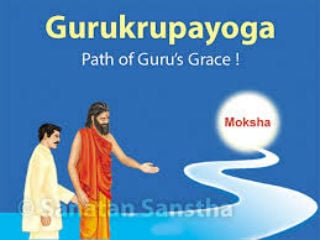 Who is a real Guru ?
Who is a real Guru ?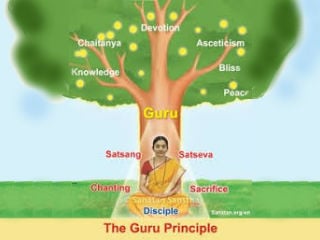 The Guru Principle
The Guru Principle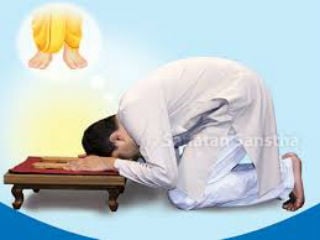 Offering gratitude unto the Holy feet of the Guru is true Gurudakshina !
Offering gratitude unto the Holy feet of the Guru is true Gurudakshina !